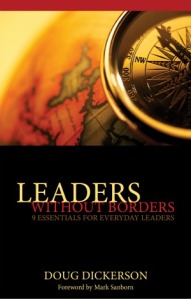
Always render more and better service than is expected of you, no matter what your task may be.” – Og Mandino
In the book, “It’s Not About the Coffee”, Howard Behar, the former president of Starbucks International, relates an observation during a store visit. A customer approached a barista and explained that he didn’t like the drink he had just purchased. The customer wanted a new drink.
To make the customer feel satisfied, the barista opened the till and handed the customer a cash refund and then commenced to make the customer a new drink. Was that the best response? From a purely economic point of view, obviously not.
Behar says the way they teach people to handle a situation like that is to apologize and offer to remake the drink. There’s a good chance the customer would have been satisfied and everyone would have benefited. He didn’t have to give the money back. But this response was better than a lot of others. It was an honest, care-filled exchange, and the barista demonstrated that he understood and appreciated the most important element of his role: human service. In the business of life, what can be wrong with that?
Behar concluded the story with the simple reminder that as long as you know why you’re here, as long as all of you together know why the organization exists; you’ll get to where you need to go.
If you have a desire to be a player in the competitive marketplace that exists today then you must acknowledge the need for and re-engage your team in this leadership skill known as the human touch. With it you can excel and without it you will be at a distinct disadvantage. Here are three characteristics of leaders who have the human touch.
They know what business they are in. No business will succeed or prosper without people. Without people you will fail. As Behar likes to say, ““At Starbucks, I’ve always said, we’re not in the coffee business serving people, we’re in the people business serving coffee.” The philosophy is profoundly simple yet so hard to embrace. Until you have a day of reckoning whereby you understand this leadership principle you will always struggle.
Leaders who understand the human touch know that people are the driving force of your business. How you treat people, serve them, and respect them makes all the difference in the world to your success. Take care of people and they will take care of you.
They are problem solvers. At the closest point of contact between your team members and your customers should come the highest degree of problem solving skills. When team members are allowed to act and solve problems without having to jump through multiple hoops to get there it is a positive reflection of your leadership. This can only happen in a corporate culture where the skills of the human touch are given priority and when your people are empowered.
The lifeblood of your business is people. The problems people bring you are simply opportunities to showcase your skills and to prove them right by choosing to come to you with their needs. Leaders with the human touch welcome new challenges and are always looking for ways to make things better. In business it’s a simple rule – people love problem solvers.
They are creative thinkers. Excelling at the human touch requires non-conventional thinking. It necessitates making an effort to see things with a creative eye and fresh perspective. Creative thinkers are not bound by the dictates of the rule book but prefer the flexibility of crating new opportunities for success that at times may be unwritten.
The barista in Behar’s experience is but one example of creativity at work in which the human touch was more important than the rule book. It’s when you empower your team with the skills of the human touch that you begin to transcend from success to significance.
Leaders with the human touch do this by knowing what business they are in, excelling at problem solving, and are creative thinkers. Human service is not always easy, but in order to get ahead you must command that leadership skill. The human touch makes the difference.
What do you say?
© 2013 Doug Dickerson
If you enjoy reading Doug’s columns you will especially enjoy reading his books, Leaders Without Borders & Great Leaders Wanted! Visit Doug’s website to order your copies today!


Website at: www.dougsmanagementmoment.blogspot.com
Please follow and like us:












